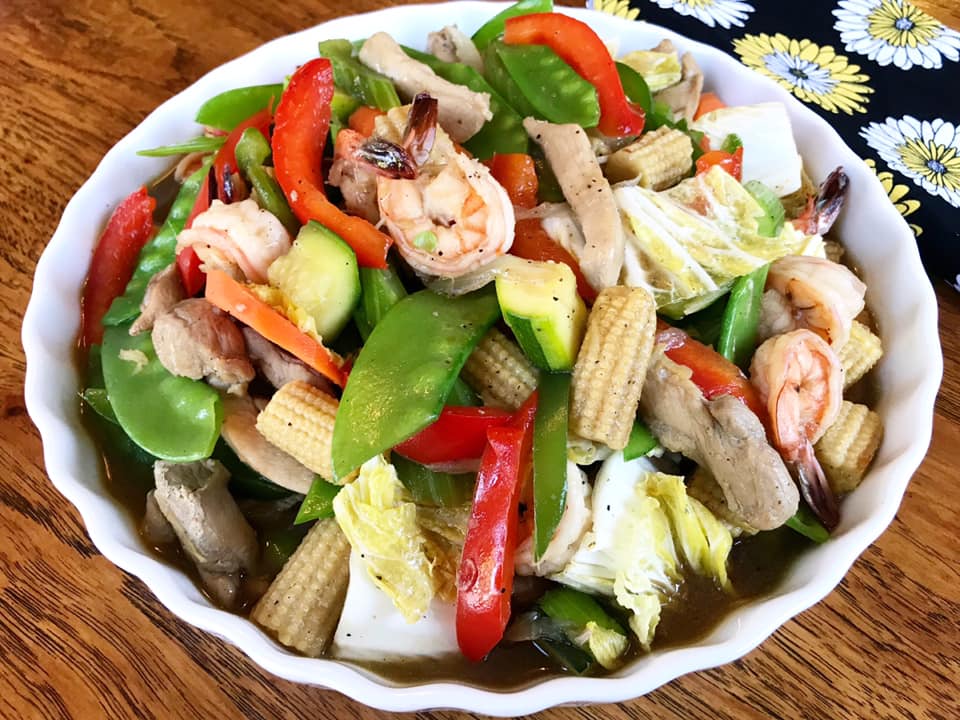

After all, it was the page with the most food stains, the telltale sign of a beloved recipe.Ĭhop suey, the emblematic dish of the America's Chinese restaurants, is similar to the Cantonse "jap sui", literally "odds and ends". I am sure you’ll love the homemade version better.Zooming past the egg foo young and sweet and sour beef, I zeroed in on chop suey. Make a shopping list of the ingredients you don’t have, and begin cooking these two delicacies. You might be hungry after reading all these yummy things about your favorite Chinese food. For people suffering from heart problems, go for a low cholesterol oil (rice-bran or olive oil), and add as many vegetables as possible avoid fried noodles and any kind of meat or seafood. If you are targeting weight loss, go for the vegetable chop suey with rice and avoid fried noodles. Chop SueyĪ cup (56g) of vegetable chop suey consists of approximately 282 calories, 23 grams of protein, 12 grams of carbohydrates, and 16 grams of total fat. Choose between fried and steamed chow mein as per your diet preferences oil contains fats and cholesterol. If you wish to take a more protein rich meal add shrimp, meat, or chicken to the chow mein.

and is quite healthy if you are targeting weight loss. A cup (56g) of vegetable chow mein consists of approximately 240 calories, 26 grams of carbohydrates, 4 grams of protein, and 14 grams of fat. Nutrition Facts Chow MeinĬhow mein is pretty low on calories and fat as compared to chop suey. If you wish to use meat or seafood, add it to the pan after you add onions. Serve immediately over fried noodles or rice. Prepare a sauce out of 1 tbsp vinegar or rice wine, ¼ cup sugar, 2 tbsp water, 2 tbsp cornstarch, 1 tbsp soy sauce, and ½ cup ketchup. But, chop suey can also be served with rice, which could be a much healthier alternative. Unlike chow mein, noodles in chop suey cannot be steamed deep-frying noodles is mandatory when cooking chop suey. There are a lot of debates about the origin of this dish, but that doesn’t really matter when you have such a yummy end-product. The Indonesian variant mainly consists of vegetables, and is referred to as cap cai (meaning mixed vegetables). But the dish is also cooked in several other cuisines, including Indian-Chinese, Polynesian, and Indonesian cuisines. Shrimp/pork/beef/chicken (non-vegetarian)Ĭhop suey, on the other hand, is typical to the American-Chinese cuisine.However, in chop suey, the mixture of cooked vegetables and meat (optional) along with the sauces is served over already cooked rice or fried noodles. A very basic difference between the two is that, in chow mein, the recipe itself includes adding cooked noodles to the cooking sauces, vegetables, and meat (optional). The dish can be either cooked with a base of rice or deep-fried noodles, the latter being more popular. The term ‘chop suey’ originates from the English translation of the Mandarin tsa-sui, and the Cantonese tsaâp suì. Although, the true tale of its invention remains a mystery. The recipe consisted of celery, bean sprouts, and meat in a tasty sauce. It was thought to be invented in 1896 by the Chinese ambassador Li Hung Chang’s cooks, who cooked the dish for some American guests for dinner. The former is soft and mostly made up of long rounded noodles, whereas the latter is more dry and crispy, and made up of flat noodles.Ĭhop suey, on the other hand, is an American-Chinese cuisine, and could also be called other overseas cuisines such as Filipino cuisine, Indian-Chinese cuisine, Polynesian cuisine, Indonesian cuisine, etc. Two main kinds of chow mein exist the first one being steamed and the other being crispy (Hong Kong style). ‘Chow’ means fried, whereas ‘mein’ refers to noodles. As we are talking specifically about two dishes, let’s take a look at them separately right at the beginning.Ĭhow mein is basically stir-fried noodles its name comes from chau-mèing, which belongs to the Taishanese dialect of Yue Chinese.


 0 kommentar(er)
0 kommentar(er)
